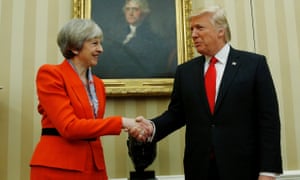By George Friedman
 Last week, President Donald Trump temporarily blocked both “immigrants and nonimmigrants” from seven predominantly Muslim countries from entering the United States. From the beginning of his presidential campaign he has spoken at various times and in a variety of ways of taking a step like this. Having done it, the action created uproar in part because it was done without adequate preparation, and in larger part, because it was done at all. The mutual recriminations over this particular act are of little consequence. What is important is to try to understand why the immigration issue is so sensitive. The uproar over Trump’s action is merely one of many to come, which also will be of little consequence.
Last week, President Donald Trump temporarily blocked both “immigrants and nonimmigrants” from seven predominantly Muslim countries from entering the United States. From the beginning of his presidential campaign he has spoken at various times and in a variety of ways of taking a step like this. Having done it, the action created uproar in part because it was done without adequate preparation, and in larger part, because it was done at all. The mutual recriminations over this particular act are of little consequence. What is important is to try to understand why the immigration issue is so sensitive. The uproar over Trump’s action is merely one of many to come, which also will be of little consequence.
Trump has pointed to two very different patterns. One is immigration to the U.S. by Muslims. The other is illegal Mexican immigration. Both resonated with Trump’s supporters. It is interesting to consider other immigration patterns that have not become an issue. One is immigration to the U.S. from India. The other is immigration from China and other parts of Asia. Both have been massive movements since about 1970, and both have had substantial social consequences.
Protesters gather at the Los Angeles International Airport’s Tom Bradley Terminal to demonstrate against President Donald Trump’s executive order effectively banning citizens from seven Muslim-majority countries. KONRAD FIEDLER/AFP/Getty Images
Indian migration to the U.S. has been one of the most successful in American history in that it has been among the least disruptive, has generated minimal hostility and has been extraordinarily successful economically. Today, Indian-Americans are the wealthiest single ethnic group in the United States. They are hardly invisible, as they are present in all professions and as corporate executives.
Chinese and East Asian immigration is more complex. Chinese immigrants began coming to the U.S. in the mid-19th century. They came as laborers supplied by Chinese contractors and were crucial in building American railroads alongside – and in competition with – Irish immigrants. The Chinese were exploited and brutalized and didn’t get citizenship. But after the 1970s, their story matched the Indians’ – the Chinese were not quite as wealthy, but they did well.
About 3.7 million people of Indian descent live in the U.S., many of them second-generation immigrants. About 4 million people of Chinese descent live in the U.S., with somewhat more complex backgrounds. There also are 3.3 million Muslims and 35.8 million people of Mexican descent, including an estimated 5.2 million of the 11 million who are in the U.S. illegally, according to Pew Research Center.



















